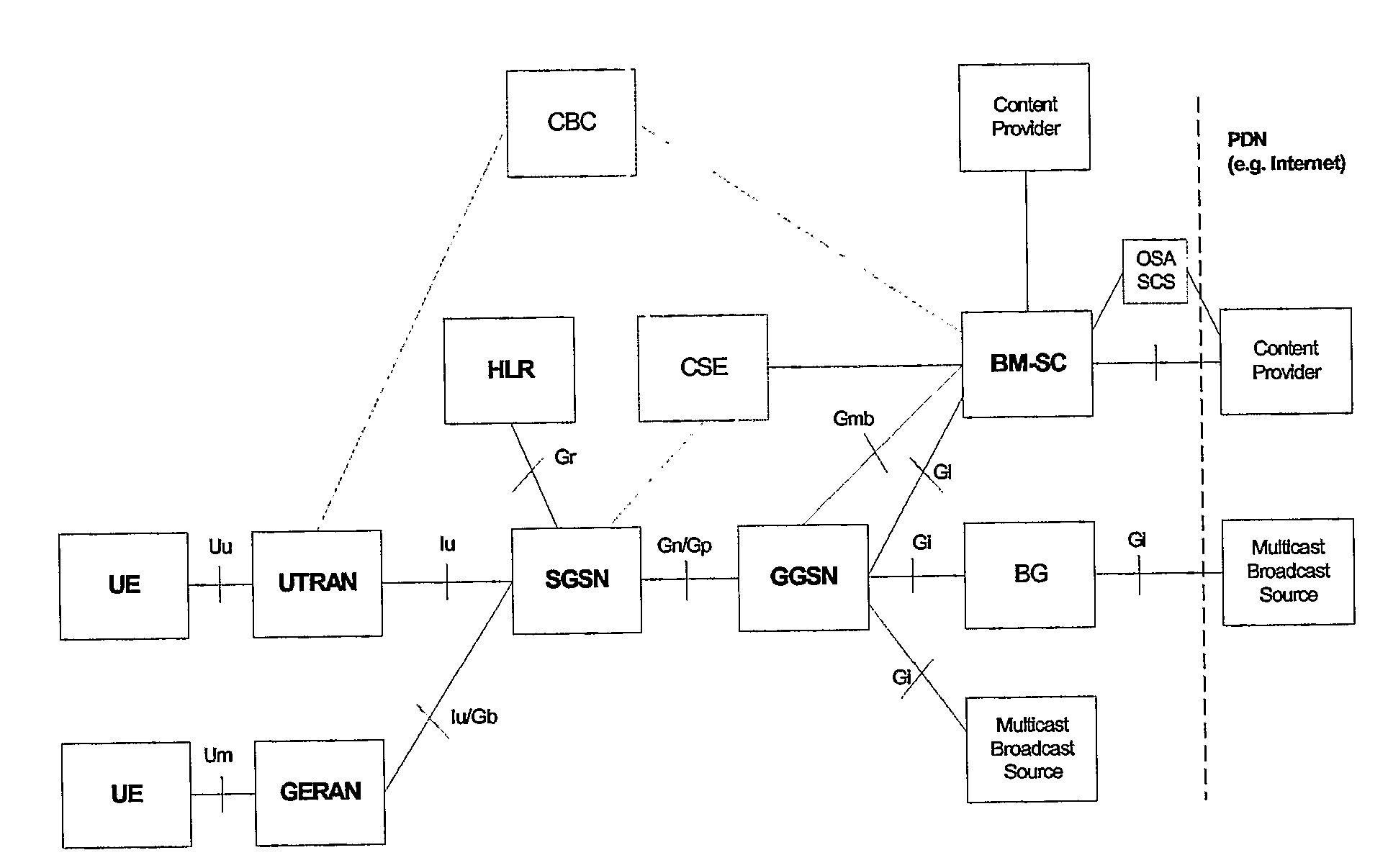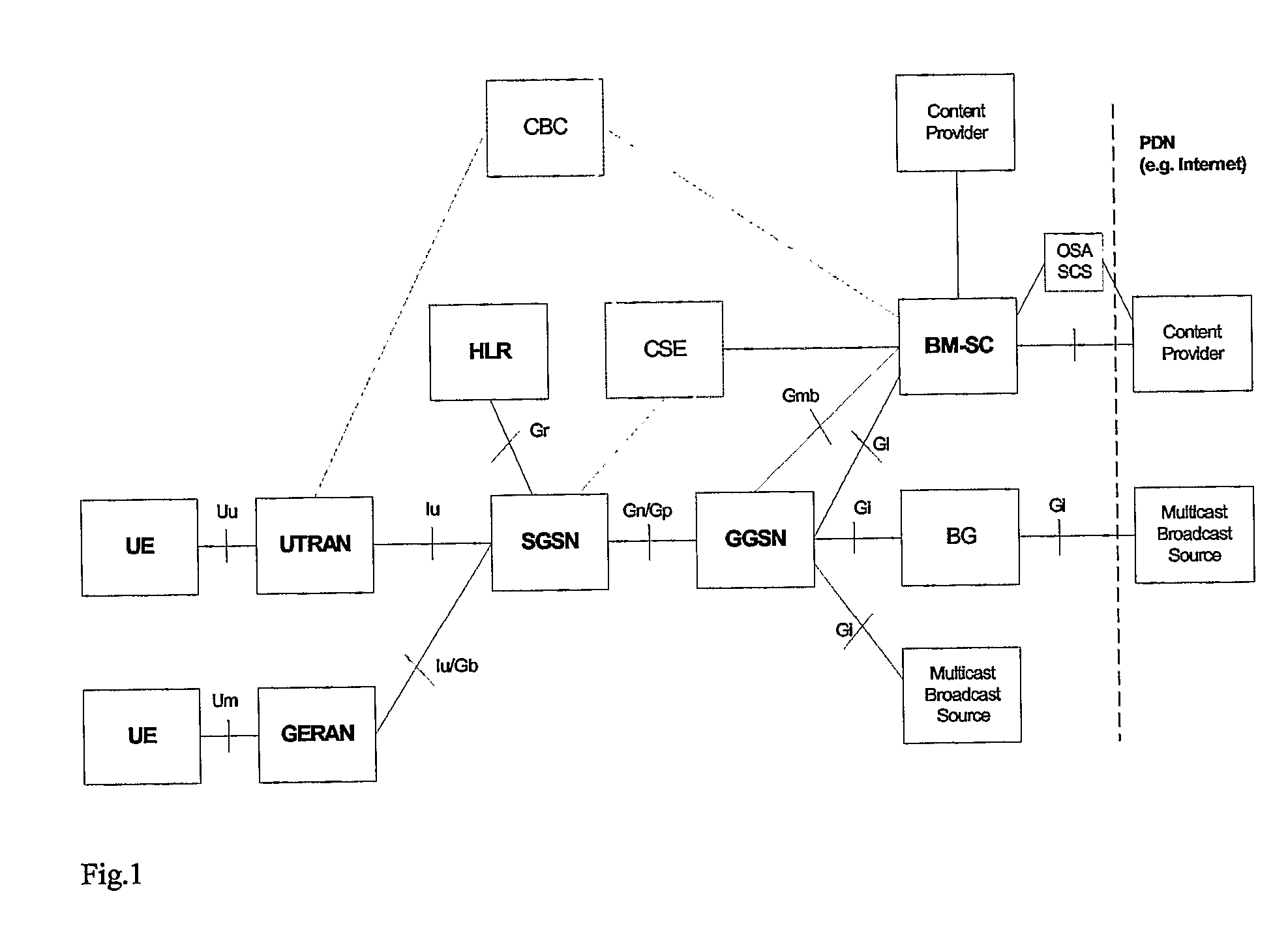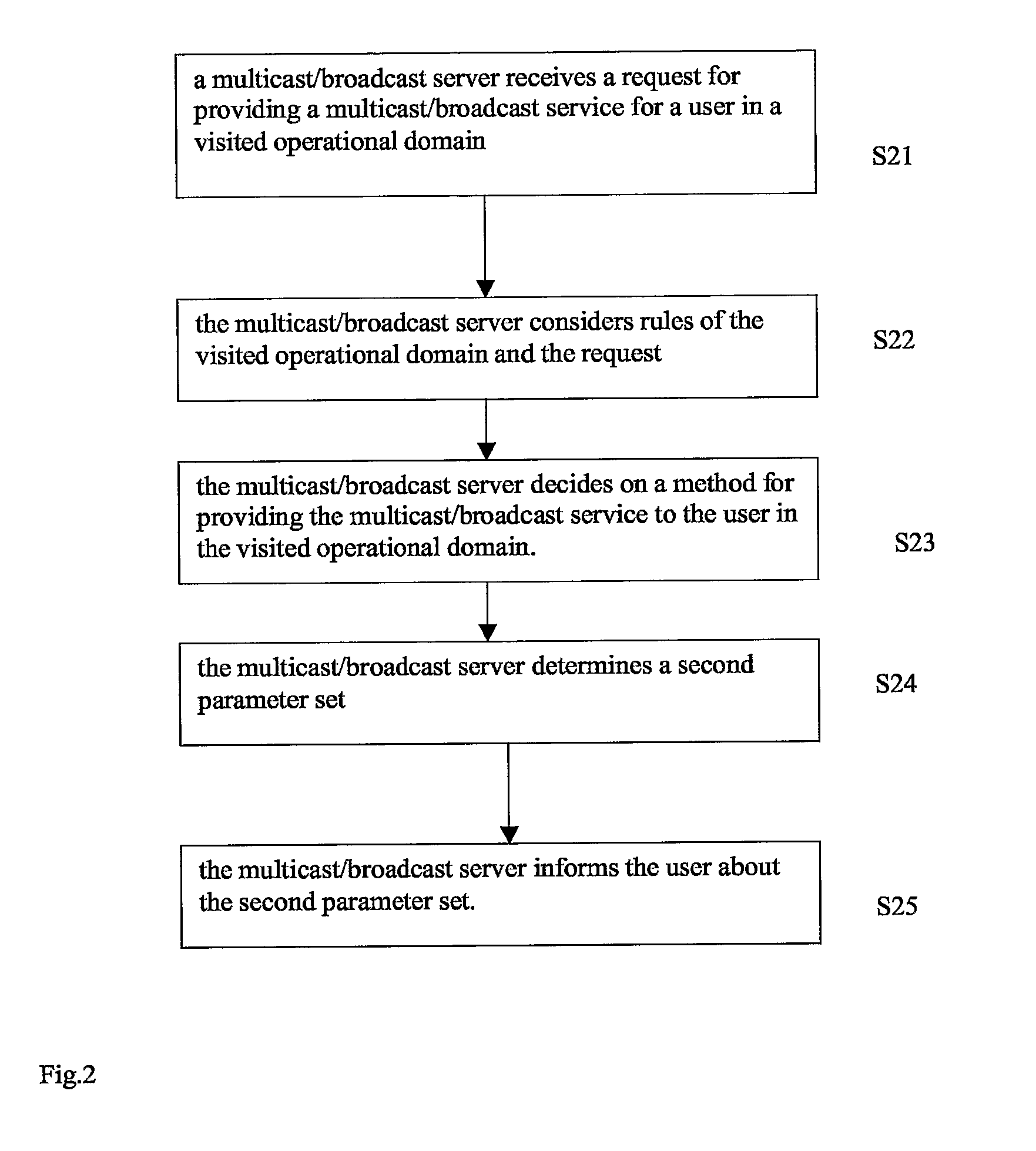Provision of multimedia broadcast/multicast service (MBMS) for roaming subscribers
- Summary
- Abstract
- Description
- Claims
- Application Information
AI Technical Summary
Benefits of technology
Problems solved by technology
Method used
Image
Examples
Example
[0037]FIG. 4 shows a flowchart of an embodiment of the present invention for providing multicast / broadcast service to a user roaming in a visited operational domain within a system.
[0038]It should be noted that the term “part”, “node”, “module”, “server” in the context of the present invention refers to any suitable combination of hardware and software for providing a predetermined functionality in the communication network. In this way, said terms generally refers to a logical entity that can be spread out over several physical entities of the network, but can also refer to a physical entity located in one physical location.
[0039]It should be noted that the term “user” in the context of the present invention refers to user equipment and the input of a human, wherein the user equipment is a combination of hardware and software. The user equipment is used and configured by a human providing some input, like for example an initialization to become a part of a multicast group. However,...
PUM
 Login to View More
Login to View More Abstract
Description
Claims
Application Information
 Login to View More
Login to View More - R&D
- Intellectual Property
- Life Sciences
- Materials
- Tech Scout
- Unparalleled Data Quality
- Higher Quality Content
- 60% Fewer Hallucinations
Browse by: Latest US Patents, China's latest patents, Technical Efficacy Thesaurus, Application Domain, Technology Topic, Popular Technical Reports.
© 2025 PatSnap. All rights reserved.Legal|Privacy policy|Modern Slavery Act Transparency Statement|Sitemap|About US| Contact US: help@patsnap.com



